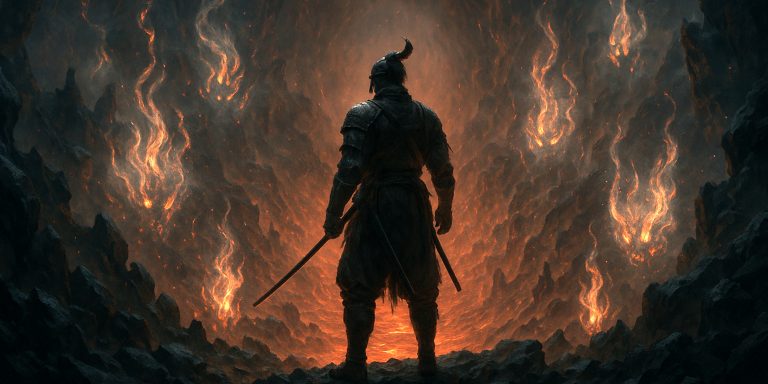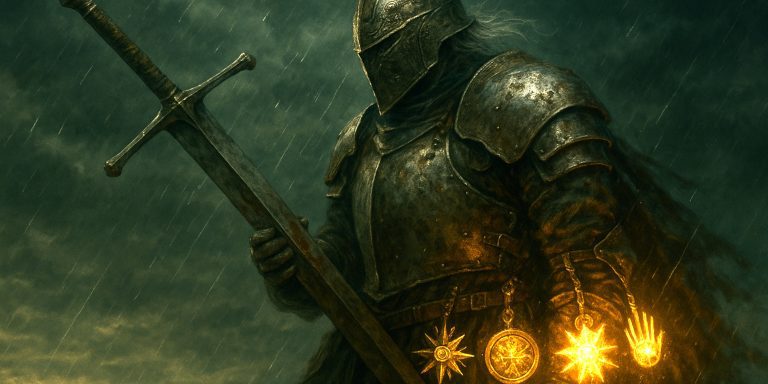
Elden Ring offers a variety of endings, each shaped by your choices, alliances, and the quests you complete. These aren’t mere variations of the same outcome. They reflect starkly different philosophies and fates for the Lands Between. Below is a detailed, structured guide to each of the major endings, what they mean, and how to unlock them.
1. Age of Fracture
Summary:
This is the default ending where the Tarnished becomes Elden Lord and attempts to restore order under the Golden Order.
How to get it:
Simply defeat Radagon and the Elden Beast without completing any specific NPC questline or altering the final choice.
Meaning:
You accept the Greater Will’s vision and maintain the existing divine structure. While it restores the Erdtree’s power, it also upholds the system of control and predestination that led to the game’s ruinous state in the first place. It is the most conventional ending, suggesting a return to the old order rather than reform or rebellion.
2. Age of Duskborn
Summary:
A more melancholic ending in which the Tarnished still becomes Elden Lord but reshapes the world into one where death is natural again.
How to get it:
Complete Fia’s questline and acquire the Mending Rune of the Death-Prince. Use this rune after defeating the Elden Beast.
Meaning:
This ending breaks the cycle of immortality imposed by the Erdtree and allows death to return to the world. It’s a quieter, more humane alternative that lifts the curse of undeath, bringing a natural end to life back into balance. It’s bittersweet rather than triumphant.
3. Age of Order
Summary:
A purified Golden Order is established, seeking harmony and correction of past flaws.
How to get it:
Follow Brother Corhyn and Goldmask’s questline to obtain the Mending Rune of Perfect Order. Use it at the end.
Meaning:
This version of the Elden Lord ending proposes a cleaner, supposedly more rational world governed by unyielding cosmic order. While noble in its intentions, it leans into a cold perfectionism, potentially at the cost of freedom or individuality.
4. Age of the Fell Curse (Blessing of Despair)
Summary:
The world is reshaped under the loathsome Dung Eater’s curse, spreading defilement and revulsion.
How to get it:
Complete the Dung Eater’s questline and use the Mending Rune of the Fell Curse.
Meaning:
This is easily the most grotesque and nihilistic Elden Lord ending. You align yourself with a worldview that believes the Lands Between are irredeemable. The result is a realm of rot and despair, where legacy and grace are rejected entirely.
5. Age of Stars
Summary:
You reject becoming Elden Lord and instead accompany Ranni the Witch as her consort, ushering in a new era governed by the stars and the moon.
How to get it:
Complete Ranni’s full questline. After defeating the Elden Beast, summon Ranni at her blue summon sign instead of touching Fractured Marika.
Meaning:
This ending offers a total rejection of the Greater Will and its influence. Ranni takes the world beyond the reach of the Erdtree, initiating an age of cosmic mystery and cold independence. It is the most liberating and romanticised ending but also the most uncertain.
6. Lord of the Frenzied Flame
Summary:
You embrace chaos and destruction, setting the world ablaze with the Frenzied Flame.
How to get it:
Find the Subterranean Shunning-Grounds under Leyndell. Unseal the door behind Mohg, the Omen, and speak to the Three Fingers to inherit the Frenzied Flame. Do not cleanse the flame at the Forge of the Giants, or else it will be removed.
Meaning:
This ending is an apocalypse. The Tarnished, driven mad by the Frenzied Flame, annihilates everything. It is a radical purge of all order and form, leaving only raw chaos. The message is brutal: true freedom can only come through destruction.
Note:
You can undo this ending by using Miquella’s Needle at Dragonlord Placidusax’s arena after inheriting the flame, but this option is extremely limited and irreversible once you reach the final boss.
The Seven Swords Takeaway
Each ending in Elden Ring is tied deeply to the game’s wider themes: power, decay, freedom, and cosmic indifference. The choices you make reflect the kind of world you believe should rise from the ruins. Whether you opt for cold reason, cursed entropy, gentle mortality, or mad annihilation, every ending is less about triumph and more about perspective.
The Lands Between were broken long before your arrival. The question is not whether you will fix it, but what your version of a ‘fix’ even means.



